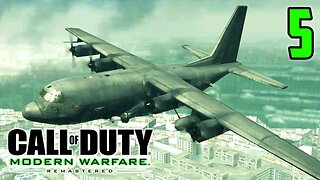How We Are Going to the Moon
Moon Mission Overview
Default (GPT-3.5)
User
How We Are Going to the Moon
ChatGPT
Going to the Moon involves several steps and technologies:
Spacecraft: NASA's Artemis program and other international efforts use advanced spacecraft like the Orion capsule and lunar landers.
Launch: Rockets like the Space Launch System (SLS) are used to propel the spacecraft into space.
Orbit: The spacecraft orbits Earth before initiating a lunar trajectory.
Lunar Transfer: The spacecraft performs a burn to escape Earth's orbit and head toward the Moon.
Lunar Orbit: Upon reaching the Moon, the spacecraft enters lunar orbit.
Lunar Descent: Lunar landers, such as the Altair lander, separate from the main spacecraft and descend to the lunar surface.
Surface Operations: Astronauts explore, conduct experiments, and gather data during their time on the Moon.
Return to Earth: After the mission's objectives are met, the spacecraft launches from the lunar surface, rendezvous with the main spacecraft in lunar orbit, and returns to Earth.
Reentry and Splashdown: The spacecraft reenters Earth's atmosphere and safely splashes down in the ocean.
This process requires careful planning, precision, and collaboration among space agencies and organizations. Technologies and strategies may evolve over time as we continue to explore and develop lunar missions.
User
How We Are Going to the Moon description
ChatGPT
Certainly! Here's a more detailed description of how we plan to go to the Moon:
Planning and Preparation: Space agencies like NASA plan lunar missions years in advance. This involves selecting crew members, designing spacecraft, and setting mission objectives.
Spacecraft Development: Advanced spacecraft like the Orion capsule are constructed, thoroughly tested, and equipped with life support systems, navigation instruments, and communication systems.
Rocket Launch: The spacecraft is launched into space atop powerful rockets like the Space Launch System (SLS) or commercial launch vehicles.
Orbital Operations: The spacecraft enters Earth's orbit, where it may perform crucial operations such as checking systems, adjusting its trajectory, or receiving supplies from cargo spacecraft.
Trans-Lunar Injection: The spacecraft performs a precise burn to leave Earth's orbit and begin its journey to the Moon. This trajectory is carefully calculated to intercept the Moon's orbit.
Lunar Arrival: Upon reaching the Moon's vicinity, the spacecraft enters lunar orbit, circling the Moon as it prepares for the next phase.
Lunar Descent: If the mission includes landing on the lunar surface, a lunar lander separates from the main spacecraft. The lander carries astronauts and equipment to the Moon's surface, guided by precise navigation and communication with mission control on Earth.
Surface Exploration: Astronauts explore the lunar surface, conduct experiments, collect samples, and carry out scientific research. They use specialized spacesuits and equipment designed for the Moon's unique environment.
Lunar Ascent: After completing their activities on the Moon, astronauts return to the lunar lander and ascend back to lunar orbit.
Rendezvous and Docking: The lunar ascent module docks with the main spacecraft in lunar orbit, reuniting with the crew.
-
 15:52
15:52
JoBlo Horror Originals
1 day agoThe Watchers Review: Shyamalans Sure Do Love Their Twists
24.9K2 -
 31:49
31:49
MichaelBisping
1 day agoBISPING & ANIK: Is Conor McGregor INJURED?! | Who Could Replace Him? | What's next for Poirier?
30.1K6 -
 16:00
16:00
Space Ice
20 hours ago'Resident Evil: Retribution' Is So Bad It's Like Looking Into A Mirror - Worst Movie Ever
25.7K16 -
 23:59
23:59
Degenerate Plays
17 hours agoThe Denny's Dictator Impresses Women - Call Of Duty Modern Warfare Remastered : Part 5
27.2K -
 1:13:51
1:13:51
Blue Siesta ASMR
1 day agoASMR Sims 4 Gameplay | New Roommates Move in Tiny House | already dating? 😱 Soft Spoken
19.2K3 -
 46:53
46:53
Chrissy Clark
19 hours agoAn Anti-Boomer, Anti-Cringey Podcast w/ Allie Cluff
19.9K36 -
 20:40
20:40
The Nima Yamini Show
15 hours agoAlpha King Nima Exposes Anti-Masculinity Agenda
37.2K45 -
 7:02
7:02
TENET Media
18 hours agoNYC Hotels TAKEN OVER By Migrants | Lauren Southern
49.7K105 -
 47:35
47:35
Alexis Wilkins
19 hours agoBetween the Headlines with Alexis Wilkins: NYPD Officers, Mexicos Leader, Fauci Hearing, DDay Salute
54.5K35 -
 1:24:49
1:24:49
Glenn Greenwald
18 hours agoBriahna Joy Gray on her Firing from The Hill and Free Speech Double Standards; Leighton Woodhouse on his Reporting About Dr. Fauci’s Dog Experiments | SYSTEM UPDATE #279
118K370